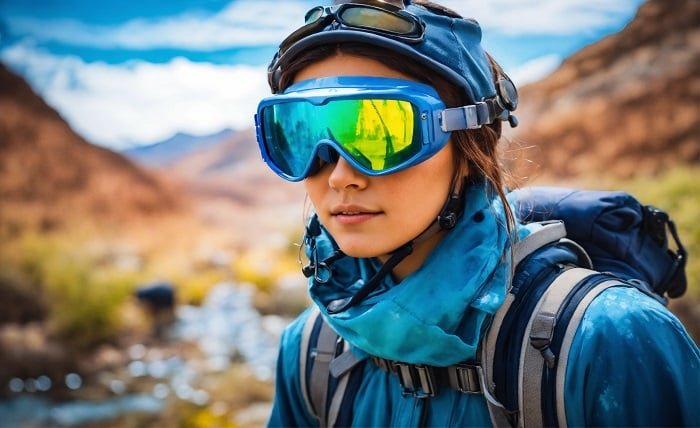Unveiling the World of Goggles: Versatility, Protection, and Style

Introduction
Goggles are not just a protective eyewear piece; they are an indispensable tool across various fields, from sports to industrial safety, from healthcare to fashion. This blog post delves into the multifaceted world of goggles, offering insights into their uses, benefits, and considerations when choosing the perfect pair.
History of Goggles: From Invention to Innovation
Goggles have a rich history, evolving from simple protective eyewear to sophisticated accessories equipped with advanced technologies. Initially designed for specific professions and environments, goggles have become ubiquitous, catering to diverse needs across different sectors.
Types of Goggles: Exploring Variety
There are numerous types of goggles, each tailored for specific activities and environments. Sports goggles, safety goggles, swimming goggles, and ski goggles each have unique features designed to enhance performance and provide maximum protection.
Importance of Lens Technology in Goggles
The lens technology in goggles plays a pivotal role in protection and visibility. Anti-fog, scratch-resistant, and UV-protective coatings are some of the advancements that enhance the functionality of goggles in challenging conditions.
Goggles in Sports: Enhancing Performance Safely
In sports, goggles are vital for safety and performance enhancement. They provide athletes with clear vision while protecting their eyes from potential hazards like debris, wind, and harmful UV rays. Each sport has specific requirements that dictate the design and features of the goggles used.
Safety Goggles: A Shield Against Hazards
In industrial and laboratory settings, safety goggles are essential. They protect the eyes from chemical splashes, airborne particles, and other hazards. Understanding the standards and certifications for safety goggles can help ensure that you choose the best protection available.
Choosing the Right Goggles: A Buyer’s Guide
Selecting the right goggles involves understanding the specific needs of the activity or environment. This section provides a detailed buyer’s guide, discussing factors such as fit, comfort, lens options, and frame durability.
Goggles and Fashion: A Stylish Accessory
Goggles have also carved out a niche in the fashion industry. Designer goggles blend style and functionality, becoming a statement accessory in various subcultures and contemporary fashion ensembles.
Maintenance and Care for Goggles
Proper maintenance is crucial to extend the life of goggles and maintain their effectiveness. This part of the post will cover the best practices for cleaning and storing goggles to prevent damage and ensure longevity.
Future of Goggles: Trends and Innovations
The future of goggles looks promising with ongoing innovations in materials and technology. This section explores upcoming trends in goggle design, such as augmented reality capabilities and eco-friendly materials.
Goggles Around the World: Global Uses and Preferences
Goggles are used worldwide in various capacities. This global perspective will highlight how different cultures and industries adapt goggles to meet their specific needs and preferences.
Conclusion
Goggles are a vital component in numerous aspects of daily life and professional activities. Whether for sports, safety, or style, choosing the right goggles can significantly impact your comfort, performance, and protection. As technology advances, the evolution of goggles promises even greater versatility and efficacy in the future.
FAQs
Q1: How often should I replace my sports goggles?
A: Sports goggles should be replaced if they show signs of wear and tear or if the clarity of the lenses is compromised. Generally, replacing them every two to three seasons is advisable for active users.
Q2: Are there goggles suitable for people who wear prescription glasses?
A: Yes, there are over-the-glasses (OTG) goggles available that can be worn over prescription glasses comfortably, providing the same level of protection and clarity.
Q3: Can goggles completely protect against UV rays?
A: High-quality goggles with UV protection can block up to 99% to 100% of UV rays, significantly reducing the risk of eye damage.
Q4: What is the difference between polarized and non-polarized goggles?
A: Polarized goggles reduce glare from reflective surfaces, which is especially useful in water sports and skiing. Non-polarized goggles do not have this glare reduction feature.
Q5: How can I prevent my goggles from fogging up?
A: To prevent fogging, ensure your goggles have a good anti-fog coating. Avoid touching the inside of the lenses, and consider using anti-fog sprays if necessary.
Read more about: baddiehub





